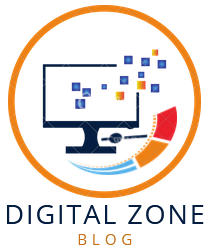In today’s fast-paced digital landscape, software has become the backbone of virtually every industry. From finance to healthcare, from communication to transportation, software applications drive efficiency and innovation. However, with increased reliance on technology, the specter of cyber threats looms large. Malicious actors are continuously seeking vulnerabilities to exploit, making security a top priority for businesses and developers alike.
To counter these threats and safeguard the future, a robust Secure Software Development Framework (SSDF) is essential. In this article, we will delve into the importance of a secure software development approach and explore the key components that form the foundation of such a framework.
Table of Contents
The Significance of a Secure Software Development Framework
Security breaches can cause irreparable damage to an organization’s reputation, financial standing, and customer trust. The repercussions of a single data breach can be far-reaching and long-lasting. This underscores the need for a proactive approach to software development that puts security at the forefront of the process.
A Secure Software Development Framework empowers developers to identify potential vulnerabilities early on in the development lifecycle, minimizing the risk of security breaches. This systematic approach instills confidence in stakeholders, customers, and end-users, knowing that the software they use is built with a security-first mindset.
Key Components of a Secure Software Development Framework
1. Thorough Requirements Analysis
The foundation of a secure software development process begins with a comprehensive requirements analysis. By involving all stakeholders, including security experts, in the early stages of development, potential security risks can be identified and addressed proactively. Understanding the software’s intended use and the potential threats it may encounter allows for the implementation of the necessary security measures from the outset.
2. Secure Design Principles
A secure software development framework emphasizes the use of secure design principles. The architecture of the application should be designed with security in mind, focusing on the principle of least privilege, data validation, and strong access controls. This proactive approach prevents potential vulnerabilities from being introduced into the software during the development phase.
3. Code Reviews and Static Analysis
Thorough code reviews and static analysis tools are indispensable in a secure software development framework. Manual code reviews by experienced developers, combined with automated static analysis tools, help identify potential vulnerabilities and coding errors. These practices allow for early detection and resolution of security issues before they manifest in the final product.
4. Secure Coding Practices
Adhering to secure coding practices is vital in creating a secure software development framework. Developers should be well-versed in secure coding guidelines, such as input validation, proper error handling, and avoiding common security pitfalls like SQL injection and cross-site scripting (XSS). Regular training and knowledge sharing sessions can help reinforce these practices across the development team.
5. Continuous Testing and Quality Assurance
The iterative nature of software development demands continuous testing and quality assurance. In a secure software development framework, this process extends beyond functional testing to include rigorous security testing. Techniques like penetration testing and vulnerability assessments are crucial in identifying potential weaknesses and ensuring that the software can withstand real-world cyber threats.
6. Secure Deployment and Maintenance
Securing the software does not end with its deployment. A robust secure software development framework includes protocols for secure deployment, such as encryption, and ongoing maintenance. Regular updates and patches are essential to address newly discovered vulnerabilities and ensure that the software remains resilient against emerging threats.

Benefits of a Secure Software Development Framework
Implementing a Secure Software Development Framework offers numerous benefits that extend far beyond mitigating security risks:
1. Enhanced Customer Trust
A reputation for security builds trust with customers, giving them the confidence to rely on your software and services. Trust is a powerful asset in today’s competitive market, and a secure software development framework is a crucial step in earning and maintaining that trust.
2. Cost Savings in the Long Run
Addressing security issues early in the development process saves resources, time, and money. Fixing security vulnerabilities after deployment is significantly more expensive and can lead to financial losses resulting from data breaches.
3. Legal and Regulatory Compliance
A secure software development framework helps ensure compliance with industry-specific regulations and data protection laws. Failure to comply with such regulations can lead to severe legal consequences and financial penalties.
4. Competitive Advantage
In a digital landscape where security breaches make headlines regularly, having a secure software development framework can be a differentiator for your organization. It can attract security-conscious customers and partners, giving you a competitive edge.
5. Peace of Mind for Developers
Developers working within a secure software development framework can focus on crafting innovative features and functionalities, knowing that security concerns are being addressed proactively. This fosters a positive work environment and encourages creativity.
Conclusion
A secure software development framework is not a luxury but a necessity in today’s cyber-threat landscape. By fortifying the future with such a framework, businesses can confidently innovate and deliver cutting-edge software while safeguarding their customers, reputation, and bottom line. Embracing security as an integral part of the development process will not only strengthen your organization against potential threats but also set you apart as a trustworthy and reliable industry player. Invest in a secure software development framework today, and build a safer, more prosperous tomorrow.
FAQs – Fortifying the Future: A Secure Software Development Framework
1. What is a Secure Software Development Framework? A Secure Software Development Framework (SSDF) is a systematic approach to software development that prioritizes security throughout the entire development lifecycle. It involves implementing secure design principles, adhering to secure coding practices, conducting thorough code reviews and security testing, and continuously maintaining and updating software to protect against emerging threats.
2. Why is a Secure Software Development Framework important? A Secure Software Development Framework is essential because it helps identify and address potential security vulnerabilities early in the development process, reducing the risk of security breaches. It instills confidence in stakeholders, customers, and end-users, ensuring that the software is built with a security-first mindset and safeguards against cyber threats.
3. How does a Secure Software Development Framework benefit businesses? Implementing a Secure Software Development Framework offers several benefits for businesses. It enhances customer trust by demonstrating a commitment to security, which can attract security-conscious customers and partners. It also saves costs in the long run by addressing security issues early and avoiding expensive data breaches. Additionally, it ensures compliance with industry regulations and provides a competitive advantage in a landscape where security breaches are a prevalent concern.
4. What are some key components of a Secure Software Development Framework? Key components of a Secure Software Development Framework include:
- Thorough requirements analysis involving all stakeholders, including security experts.
- Emphasizing secure design principles during the architecture phase.
- Conducting code reviews and static analysis to identify vulnerabilities.
- Adhering to secure coding practices, such as input validation and error handling.
- Continuous testing and quality assurance, including penetration testing.
- Secure deployment and ongoing maintenance with regular updates and patches.
5. How does a Secure Software Development Framework contribute to data protection? A Secure Software Development Framework plays a crucial role in data protection by implementing security measures at every stage of development. This includes securing data storage, transmission, and access control. By addressing security vulnerabilities early, the framework minimizes the risk of data breaches and ensures that customer data remains safe and confidential.
6. Can a Secure Software Development Framework prevent all security breaches? While a Secure Software Development Framework significantly reduces the risk of security breaches, it cannot guarantee complete immunity. Cyber threats are continually evolving, and no system is entirely invulnerable. However, a robust framework can make it significantly more challenging for malicious actors to exploit vulnerabilities and can mitigate the impact of potential breaches.


1 thought on “Fortifying the Future: A Secure Software Development Framework”
Comments are closed.